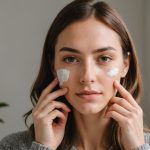Understanding the Importance of a Morning Skincare Routine
A morning skincare routine is vital for maintaining optimal skin health. Starting your day with a consistent ritual helps protect your skin from environmental stressors and pollutants encountered daily. This consistency not only defends against potential damage but also prepares your skin to react better to subsequent products and treatments.
Layering products in a specific sequence during your routine is crucial. By applying products in the correct order—from thinnest to thickest—you ensure maximum absorption and efficacy. For instance, serums, which often contain active ingredients, should be applied before moisturisers to penetrate the skin effectively.
Also read : Top Knee Strengthening Exercises for Women: Unlock Your Best Moves!
The benefits of a comprehensive skincare regimen extend beyond immediate hydration and protection. With time, the visible signs of ageing, such as fine lines and wrinkles, can diminish. Regular care also aids in balancing skin tone and texture, resulting in a more youthful, glowing complexion. Incorporating products tailored to your skin type and concerns yields the best results.
To conclude, adhering to a morning skincare routine empowers you to take charge of your skin’s health, bringing both immediate and long-lasting benefits.
Additional reading : Top Proven Techniques to Stay Perfectly Hydrated All Day Long
Step-by-Step Guide to Layering Skincare Products
Cleansing
The importance of using the right cleanser for your skin type cannot be overstated. For those with oily skin, a gel-based cleanser helps balance excess sebum, while cream-based cleansers suit dry skin by adding moisture. To achieve thoroughly clean skin, consider the double cleansing technique, which utilizes an oil-based cleanser to dissolve makeup and impurities, followed by a water-based formula to remove any remaining dirt. This method ensures effective skincare product layering by starting with a clean slate.
For the best practices when applying cleanser, ensure to use lukewarm water to dampen your skin, as hot water can strip natural oils, while cold water may not effectively open pores. Gently massage the cleanser onto your face in circular motions, focusing on areas prone to oil buildup. Rinse thoroughly, ensuring no residue is left, which could hinder the absorption of subsequent skincare products. These steps primely prepare the skin for the next phases of skincare application, promoting optimal results from the entire routine.
This methodical approach not only supports clean, healthy skin but also enhances the efficiency of every product in your skincare regime.
Recommended Products for Different Skin Types
Choosing the right skincare products for skin types can be challenging due to the unique needs of each type.
Oily Skin
Struggling with oily skin often revolves around finding skincare products that efficiently balance oil production. Key ingredients to look for include salicylic acid, niacinamide, and tea tree oil, which help in controlling excess sebum. Among the top cleansers, gel-based formulas often offer the best results as they cleanse without over-stripping the skin. It’s important to select a moisturizer that is lightweight but hydrating—oil-free lotions available are specifically designed for this purpose.
Serums infused with retinol or niacinamide can serve as an excellent choice for controlling shine throughout the day. Considerations such as these ensure that your skincare regimen effectively manages excess oil while also maintaining skin health.
Dry Skin
Hydration is crucial for combating dry skin, so products containing hyaluronic acid, glycerin, and ceramides are optimal. These ingredients restore moisture balance and soothe dryness. Cream cleansers and rich, emollient moisturizers are essential, offering much-needed hydration. When applying products, layering is vital—begin with a hydrating serum, followed by a dense cream to lock in moisture. It’s imperative to maintain these practices consistently to achieve optimal results.
The Science Behind Skincare Ingredients
Unveiling the mysteries of skincare ingredients can significantly optimise your skincare routine. Understanding the true functions of popular components like hyaluronic acid, retinol, and vitamin C can offer notable benefits. Hyaluronic acid, for instance, is renowned for its impressive hydration properties, making it particularly beneficial for dry skin types. Retinol is celebrated for its anti-aging prowess, helping to renew skin cells and diminish fine lines.
The connection between ingredients and different skin types is pivotal. For example, salicylic acid is often recommended for oily or acne-prone skin due to its ability to penetrate oil and unclog pores. Conversely, individuals with sensitive skin might benefit from gentler ingredients like chamomile extract or aloe vera, known for soothing inflammation.
However, common misconceptions about ingredient efficacy persist. Not all products containing popular ingredients will work the same for every skin type; personalization is key. Moreover, some might believe that more concentration equates to better outcomes, which isn’t always true. Overusing potent ingredients like retinol can lead to irritation rather than improvement. Hence, selecting skincare products should involve a careful examination of ingredient lists and an understanding of their respective benefits for optimal results.
Application Techniques for Optimal Results
Mastering the art of skincare involves understanding the application techniques that optimise your routine. It’s not just about what you use, but how you use it.
Proper application techniques can elevate your results significantly. When applying your skincare, remember to be gentle; the skin is delicate. Use fingertips for serums and creams, employing light, upward strokes. This not only ensures even distribution but also promotes circulation. For thicker products like moisturisers, start from the center of your face, blending outward to cover all areas.
The order and timing of skincare application are critical. Begin with cleansing to remove impurities, follow with toner to balance the skin’s pH, and then apply serum for targeted treatment. Lock in the benefits with a moisturiser, and never skip sunscreen during the day. Each step prepares your skin for the next, ensuring maximum efficacy.
Adapt these skin care tips to your specific needs for youthful, glowing skin. By mastering these steps, you support your skin’s health and maintain its natural glow. Understanding and implementing these strategies is crucial to achieve the best possible results.
FAQs About Morning Skincare Routines
Morning skincare often brings up common skincare questions. Let’s tackle these in our concise FAQs.
Addressing Common Misconceptions
Misconception: “You don’t need sunscreen indoors.”
Sunscreen should always be applied, even inside, to protect from indirect UV rays. These can penetrate through windows, potentially causing skin damage over time.
Tips for Troubleshooting Common Issues
Issue: “My skin feels oily after moisturizing.”
First, check the product type. Consider reducing application amount or switching to a lighter, oil-free moisturizer, ensuring your skin stays hydrated without excess oiliness.
Expert Answers on Product Layering
A frequently posed dilemma in skincare FAQs is: “Does order matter?”
Absolutely. The correct product order maximizes effectiveness. Begin with cleansing, followed by toner, then serums for active ingredients. Finish with moisturizer and sunscreen.
Layering involves understanding product textures—from thinnest to thickest. Serums first allow active ingredients close access to the skin surface. Moisturizer locks everything in, and sunscreen provides a protective finish. Good product layering enhances each component’s benefits, making your morning routine both effective and efficient.
Understanding these skincare FAQs empowers individuals, enabling them to troubleshoot confidently and adopt a harmonious skincare routine tailored to specific needs.











